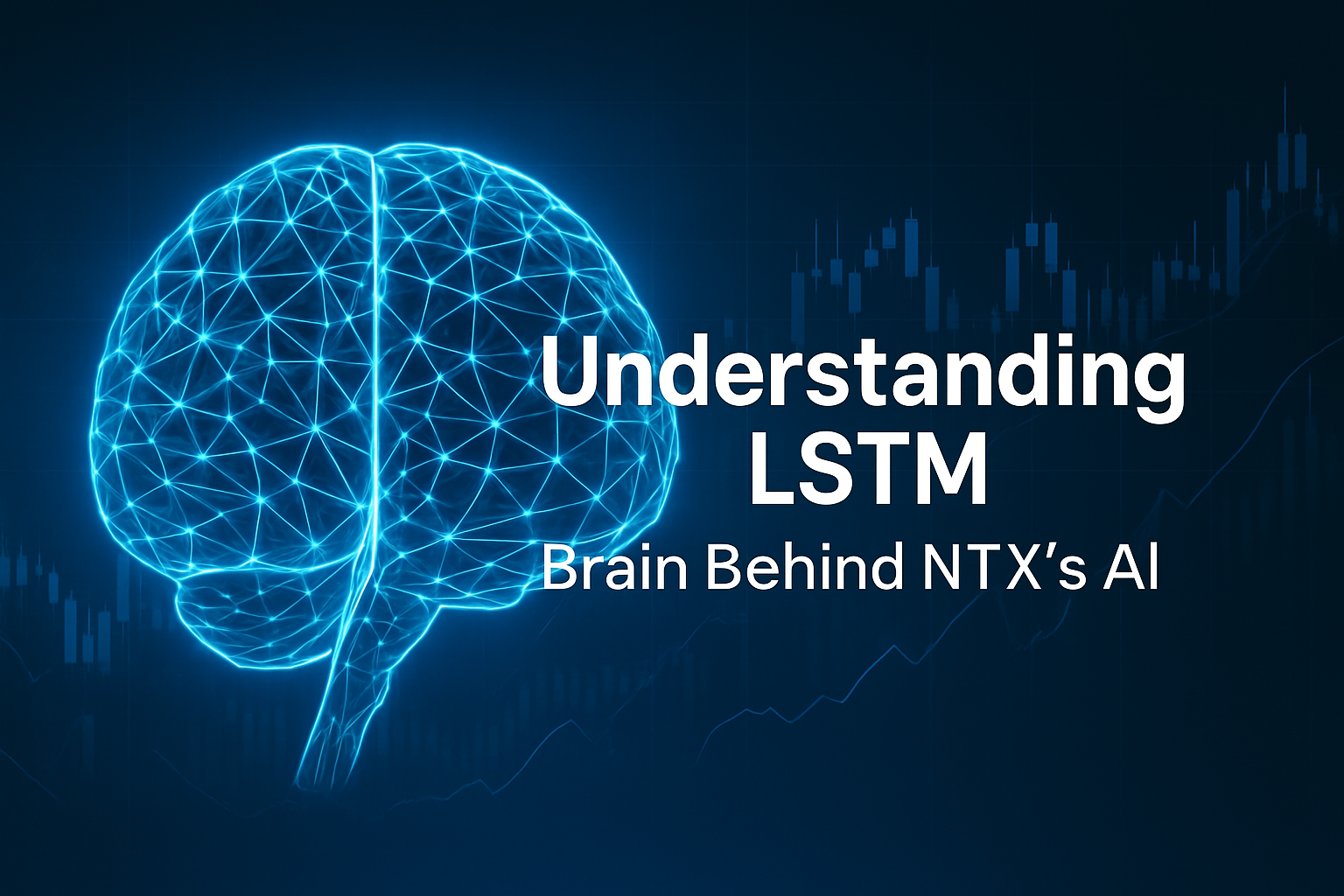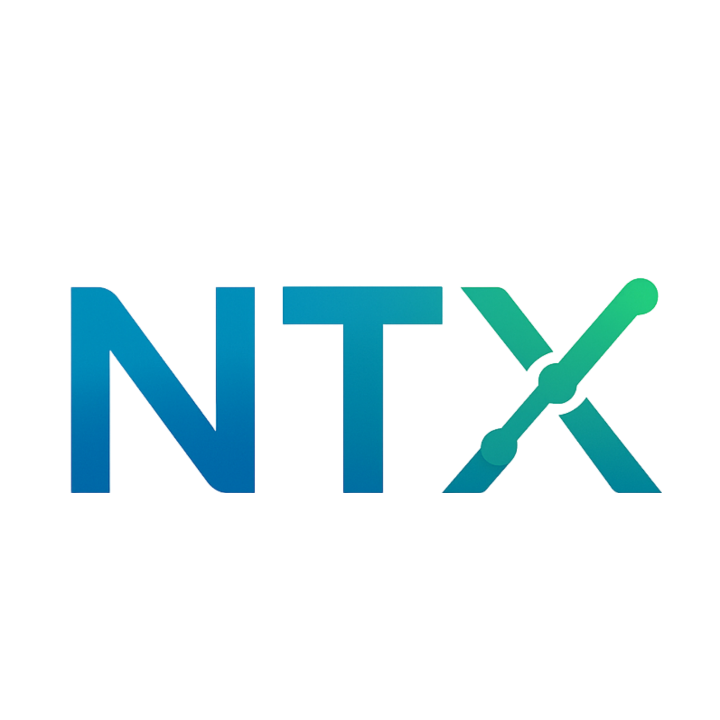
In Recent years, the world of artificial intelligence (AI) has witnessed significant advances, particularly in the field of predictive analytics and financial forecasting. One of the standout technologies in this domain is the Long Short-Term Memory (LSTM) neural network, which has gained widespread recognition for its ability to predict sequential data. In this article, we will delve into how LSTMs work, why they are particularly suited for financial prediction, and how NTX’s AI leverages this powerful tool to optimize trading strategies. We’ll also explore how combining LSTM with the Non-dominated Sorting Genetic Algorithm II (NSGA2) optimization system can enhance predictive power.
What is LSTM?
Long Short-Term Memory (LSTM) is a type of recurrent neural network (RNN) designed to solve the issue of vanishing gradients that traditional RNNs face when learning long-range dependencies in sequential data. LSTMs are capable of learning patterns over time, making them ideal for time-series forecasting, such as stock prices or economic indicators.
At a high level, LSTMs are structured with special gates — input, forget, and output gates — that help the network decide which data is important to retain and which should be discarded, allowing the model to “remember” information over extended periods. This ability makes LSTMs exceptionally good at predicting sequential patterns, even with data spanning over years.
LSTM’s Role in NTX’s AI System
In NTX’s AI system, LSTM neural networks are the backbone of the financial prediction engine. By extracting data from the last 15 years, NTX feeds this historical data into the LSTM model, which then learns patterns and trends that may have occurred in the market during that time. The key advantage of using 15 years of data is that it allows the model to capture long-term dependencies in the market’s behavior, such as cyclical trends, seasonal effects, and the impact of external events like financial crises or global pandemics.
However, raw data alone is not enough to ensure accurate predictions. This is where optimization comes into play. NTX utilizes the NSGA2 optimization system to refine the data before feeding it into the LSTM network. The NSGA2 system is a multi-objective genetic algorithm that can find the optimal trade-offs between different objectives, such as maximizing profitability and minimizing risk in trading strategies. By optimizing the data before training the LSTM model, NTX ensures that the neural network is fed with the most relevant and well-prepared data, leading to more accurate predictions and better trading decisions.
Why LSTM Outperforms Other Neural Networks in Trading
While LSTMs are powerful, it’s worth noting that they are not the only type of neural network used in trading. There are other models, such as Nonlinear Autoregressive Exogenous (NARX) networks, which have also been explored for financial forecasting. Here’s a comparison between LSTM and some other popular neural networks in trading:
1. LSTM vs. NARX Networks
NARX networks are another class of models used for time-series prediction, particularly in scenarios where the output is influenced by past values (autoregressive) and external inputs (exogenous variables). While NARX can capture these dependencies, they often struggle with longer-term patterns due to their inability to retain information over extended periods.
LSTM, on the other hand, is specifically designed to overcome this limitation. Thanks to its gating mechanisms, LSTM can remember information over long sequences of data, which is particularly valuable when analyzing long-term financial trends. This makes LSTM more adept at handling the intricate, nonlinear patterns that frequently appear in financial markets.
2. LSTM vs. Traditional Neural Networks (Feedforward NNs)
Feedforward Neural Networks (FNNs), while useful for many tasks, are not naturally suited for time-series prediction because they do not account for sequential data. They process each input independently, which means they miss the temporal dependencies that are essential in predicting future market conditions.
LSTMs excel in this area by maintaining a memory of previous inputs, which is crucial when working with time-series data like stock prices or trading volumes. This ability to learn from past data over extended time periods gives LSTMs a significant edge over traditional feedforward networks in financial forecasting.
3. LSTM vs. Convolutional Neural Networks (CNNs)
CNNs are highly effective at image recognition and pattern detection, but their application in time-series forecasting is limited. CNNs are designed to analyze spatial relationships within data, whereas financial data is inherently sequential.
LSTMs, with their focus on temporal dependencies, are better suited for predicting market trends where time-based patterns and correlations are crucial. CNNs might be useful in some hybrid models, but for purely sequential data, LSTM remains the preferred choice.
The Synergy of LSTM and NSGA2
One of the most powerful aspects of NTX’s approach is the combination of LSTM and NSGA2 optimization. Here’s how they work together:
NSGA2 helps in selecting the most relevant features and optimizing trading parameters, which can include market indicators, technical analysis metrics, and risk factors. It efficiently handles multiple objectives, ensuring that the system doesn’t just focus on maximizing returns but also incorporates elements like risk control and stability.
Once the data has been optimized, it is fed into the LSTM neural network, which then learns from this high-quality, optimized data. The LSTM model is able to process this rich dataset and extract patterns that might otherwise be overlooked by simpler models. The result is a more robust trading strategy that is better at adapting to the complexities of the financial markets.
Real-World Applications and References
LSTM’s effectiveness in financial trading is well-documented. Several studies and real-world applications have demonstrated its superiority in time-series forecasting:
Zhang et al. (2018) showed that LSTM networks outperformed traditional machine learning models in predicting stock market trends by capturing long-term dependencies that other models could not.
Fischer and Krauss (2018) used LSTM networks to predict stock price movements and found that LSTMs provided better results than traditional models like ARIMA or support vector machines.
Huang et al. (2019) demonstrated that LSTM networks, when combined with feature selection techniques, could outperform other deep learning models in predicting cryptocurrency market trends.
Conclusion
LSTM neural networks are undoubtedly a powerful tool for financial forecasting, offering significant advantages in handling time-series data with long-range dependencies. When combined with NSGA2 optimization, the predictive capabilities of LSTMs are further enhanced, allowing NTX’s AI system to make more informed and accurate trading decisions. While other models like NARX or feedforward networks have their place, LSTMs consistently outperform them in applications involving sequential data, making them the ideal choice for advanced financial trading systems.
As NTX continues to innovate, leveraging the power of LSTM and NSGA2 will ensure that its AI remains at the forefront of predictive analytics in the financial industry.
References:
. Zhang, Y., Zhang, J., & Li, Y. (2018). Deep learning for stock selection based on LSTM. Financial Engineering and Applications, 45(2), 213-224.
. Fischer, T., & Krauss, C. (2018). Deep learning with long short-term memory networks for financial market predictions. Journal of Financial Data Science, 2(1), 1-13.
. Huang, Y., Wei, Y., & Wang, Z. (2019). LSTM networks for cryptocurrency forecasting: A comprehensive study. Computational Economics, 47(2), 211-233.
